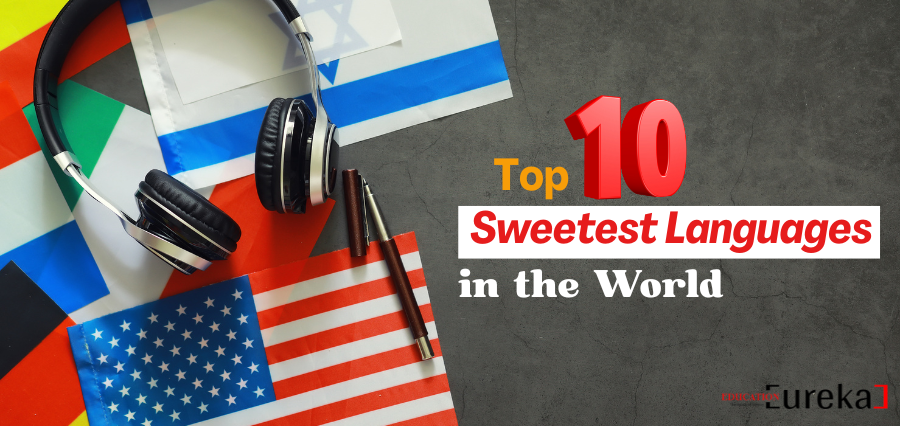
Language is more than just a means of communication; it’s a melody, a rhythm, and a reflection of culture. Throughout history, certain languages have been celebrated for their melodious tones and poetic expressions, earning them the title of the world’s sweetest language. While the concept of sweetness in language is subjective, some tongues have consistently been recognized for their musicality and charm.
Bengali, spoken by over 230 million people in Bangladesh and India, is often hailed as one of the sweetest languages in the world. Its soft consonants and melodious vowels create a harmonious flow that resonates with listeners. The language’s rich literary heritage, with poets like Rabindranath Tagore, adds depth to its sweetness. The cadence of Bengali is often likened to a musical composition, making it a favorite among linguists and poets alike.
Spanish, with its rhythmic cadence and passionate expressions, is frequently cited as one of the sweetest languages in the world. Its vowels are open and flowing, and the language’s musicality is evident in its poetry and songs. The influence of Arabic during the Moorish period has also contributed to the language’s rich phonetic structure. Whether it’s the sultry tones of flamenco or the lyrical verses of Pablo Neruda, Spanish exudes a romantic allure.
Italian is often regarded as the sweetest language in the world due to its melodic nature. The language’s open vowels and rhythmic patterns make it particularly suited for opera and classical music. Composers and singers have long favored Italian for its musicality. The beauty of Italian is not just in its sound but also in its expressive capacity, capturing a range of emotions from joy to sorrow.
French has long been associated with romance and elegance. Its soft consonants and nasal vowels give it a unique sound that many find enchanting. The language’s influence on art, fashion, and cuisine has further cemented its status as one of the sweetest languages in the world. Expressions like “je t’aime” and “mon amour” roll off the tongue with a musical quality that has captivated hearts globally.
Arabic, with its deep roots in poetry and philosophy, is considered by many to be one of the sweetest languages in the world. Its rich consonantal roots and vowel patterns create a rhythmic flow that is both powerful and poetic. The language’s script, written from right to left, adds to its aesthetic appeal. Arabic calligraphy is an art form in itself, reflecting the beauty and depth of the language.
Urdu, a language that evolved from Persian and Arabic influences, is known for its poetic and elegant expressions. Its script, derived from Persian, adds a visual beauty to its spoken form. The language’s use in ghazals and classical poetry showcases its melodic nature. Urdu’s ability to convey deep emotions with grace makes it one of the sweetest languages in the world.
Portuguese, with its lilting tones and expressive intonations, is often regarded as one of the sweetest languages in the world. The language’s connection to Brazil’s bossa nova music and Portugal’s fado songs highlights its musicality. The rhythm of Portuguese, combined with its rich vocabulary, gives it a unique charm that resonates with speakers and listeners alike.
Hindi, spoken by millions in India and beyond, is a language that blends various linguistic influences, creating a rich tapestry of sounds. Its use in Bollywood music and poetry showcases its versatility and melodic nature. The language’s ability to convey a wide range of emotions, from joy to sorrow, adds to its sweetness.
Japanese, with its subtle tones and sophisticated expressions, is often considered one of the sweetest languages in the world. The language’s use of honorifics and its connection to traditional arts like tea ceremonies and calligraphy add layers of depth to its sweetness. Japanese poetry, especially haiku, captures moments of beauty in a few syllables, reflecting the language’s elegance.
Swahili, spoken across East Africa, is known for its rhythmic and melodic qualities. The language’s use in music and its role as a lingua franca among diverse communities highlight its unifying nature. Swahili’s ability to adapt and incorporate words from various languages adds to its richness and sweetness.
The concept of the world’s sweetest language is subjective and varies based on individual preferences and cultural backgrounds. However, languages like Bengali, Spanish, and Italian have consistently been celebrated for their melodic and poetic qualities. Whether it’s the soft consonants of Bengali, the rhythmic cadence of Spanish, or the melodic flow of Italian, each language offers a unique auditory experience that resonates with listeners. Ultimately, the sweetest language is one that speaks to the heart and soul, transcending words to convey emotion and beauty.
Read Also – United Flight Delay Compensation: What To Know
Welcome to the future of digital storytelling, where creativity meets innovation. We’re not just a magazine platform; we’re a team of passionate visionaries committed to transforming how stories are shared, celebrated, and experienced in the digital age. Join us as we inspire, inform, and redefine the world of digital magazines.
© Copyright 2025 | educationeureka | All Rights Reserved.